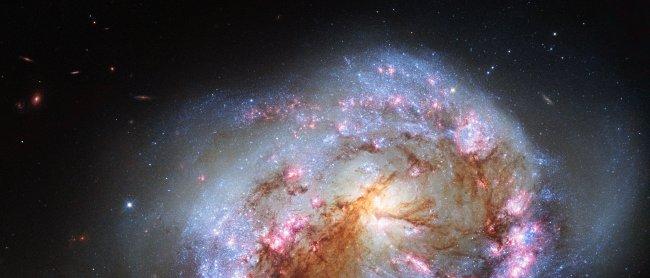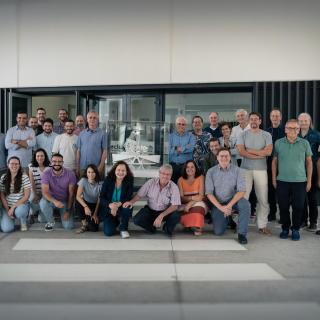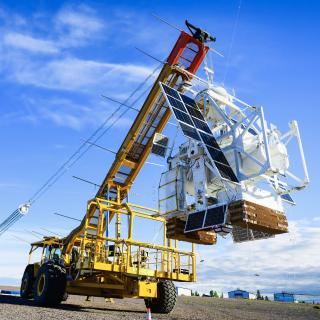After carrying out a spectroscopic analysis with the MUSE instrument, on the VLT (Very Large Telescope), in the European Southern Observatory (Chile), a team led by the astrophysicist of the IAC Ana Monreal Ibero has proved the existence of diffuse interstellar bands (DIBs) in the Antennae Galaxies, 70 million light years from Earth. In this way, it has shown that there is probably organic material in other galaxies beyond our galactic neighbourhood.
The electromagnetic spectrum of a celestial object (galaxy, star, etc.) results from breaking down its emitted light into its constituent colours. The characteristics of this spectrum -for example, the dominant or the absent colours- inform us about the properties of the object, such as its speed relative to us, and chemical composition. “In addition, and for the same price, -explains Ana Monreal- this analysis gives us information about the material that light passes through on its way to us and, in particular, about the interstellar medium. The DIBs are dark bands that appear in the spectra of astronomical objects associated with this medium and whose origin is still a mystery today. They cannot be explained by the presence of known simple molecules and are suspected to be caused by material which is probably organic.
Most studies related to the DIBs have been confined to objects in the Milky Way, as they are particularly weak spectral features. Outside our Galaxy there are some detections of DIBs, mostly in the Magellanic Clouds, which are members of the Local Group of galaxies, but only very rarely have they been detected well beyond the confines of the Local Group. However, when we look well beyond the Milky Way it is of interest to see how they behave in highly energetic interstellar medium conditions, such as those found in a starburst galaxy, where stars are being formed at a much higher rate than in our Galaxy.
These observations beyond the galaxies that surround us can give additional clues about the possible nature of the molecules that cause DIBs, but they can also provide tools for astronomers to characterize the interstellar medium to which they belong.
"In our work, we have explored the potential of using integral field spectrographs, such as HARMONI (an instrument designed for the future 39m telescope, the E-ELT), in whose construction the IAC participates," clarifies Ana Monreal. And she adds: "For this, we have used what constitutes, today, the crème de la crème in this type of instrumentation, MUSE on the VLT, to obtain data from the closest merging spiral galaxy system: The Antennae Galaxies”.
MUSE obtains a huge number of spectra from a relatively large area on the sky from a single exposure. "Based on adding the signal of neighbouring spectra and carefully modelling and separating the emission due to the stars and the ionized gas in the system, we managed to detect the signal from two of the best-known DIBs and, in fact, the first two DIBs to be identified, along more than 200 and 100 independent lines of sight respectively", explains Monreal.
This study also compares the detections obtained by the group with other properties and components of the interstellar medium in this system, in particular: the attenuation (directly related to the amount of dust) and the distribution of atomic hydrogen, molecular gas and some bands in emission in the middle infrared that also appear to be associated with organic compounds.
Scientific article: Monreal-Ibero, A. et al. Diffuse interstellar bands λ5780 and λ5797 in the Antennae Galaxy as seen by MUSE. Astronomy & Astrophysics. DOI: 10.1051/0004-6361/201732178
Contact at the IAC: Ana Monreal Ibero (ana.monreal [at] iac.es (ana[dot]monreal[at]iac[dot]es))



